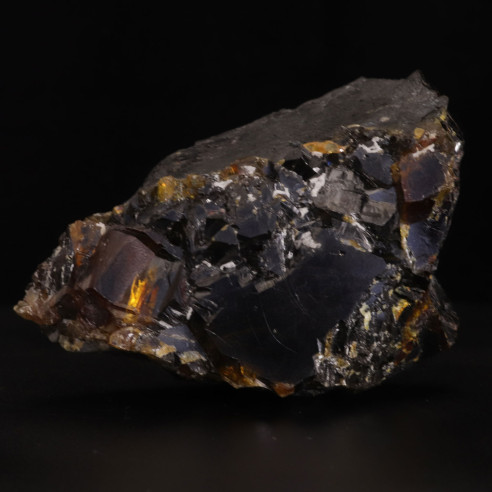Sphalerite from the Zlatograd mine in Bulgaria (year 2000).
Stone dimensions: L: 2.76 inches x W: 1.18 inches x H: 1.57 inches (L: 70mm x W: 30mm x H: 40mm).
Weight: 6.21 oz (176g).
Sphalerite has the chemical formula (Zn,Fe)S. It is composed mainly of zinc and sulphur, with iron often present in varying quantities.
Hardness on the Mohs scale: The hardness of sphalerite is between 3.5 and 4.
Density: The density of sphalerite varies from 3.9 to 4.1.
The history of the Zlatograd mine in Bulgaria goes back several centuries. Zlatograd, a small town located in the Smolyan region, is known for its rich gold and silver deposits.
The first mining activities in Zlatograd date back to antiquity, with the Thracians (an ancient Balkan civilization), and the Romans who continued mining in Zlatograd, using the techniques of the time to extract gold and silver from the mines.
Over the centuries, mining in Zlatograd has gone through periods of prosperity and decline due to various economic and political factors. During the 19th century, the mining industry developed in the region, attracting foreign investors and leading to an increase in gold and silver production.
During the communist period in Bulgaria, from 1946 to 1989, mining in Zlatograd was nationalized and managed by the state. The Zlatograd mine continued to produce gold and silver, thus contributing to the country's economy.
However, after the fall of the communist regime, the Bulgarian mining industry experienced economic difficulties. In the early 1990s, many mining sites, including Zlatograd, faced profitability problems and were forced to downsize or close down completely.
Despite these difficulties, mining in Zlatograd has gradually resumed in recent years thanks to the investment of private mining companies and the introduction of modern technologies. Today, the Zlatograd mine continues to produce gold and silver, contributing to the local and national economy.










